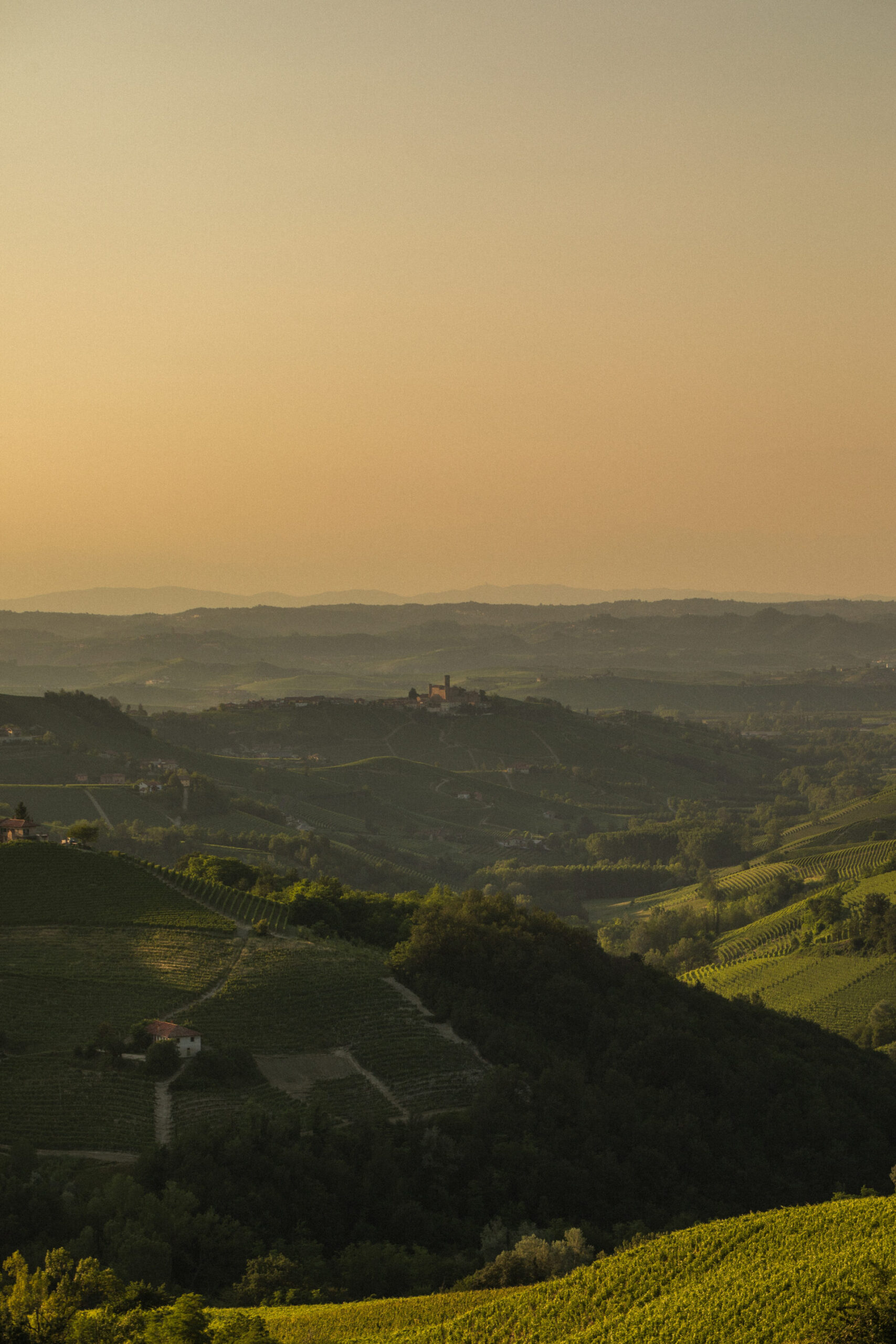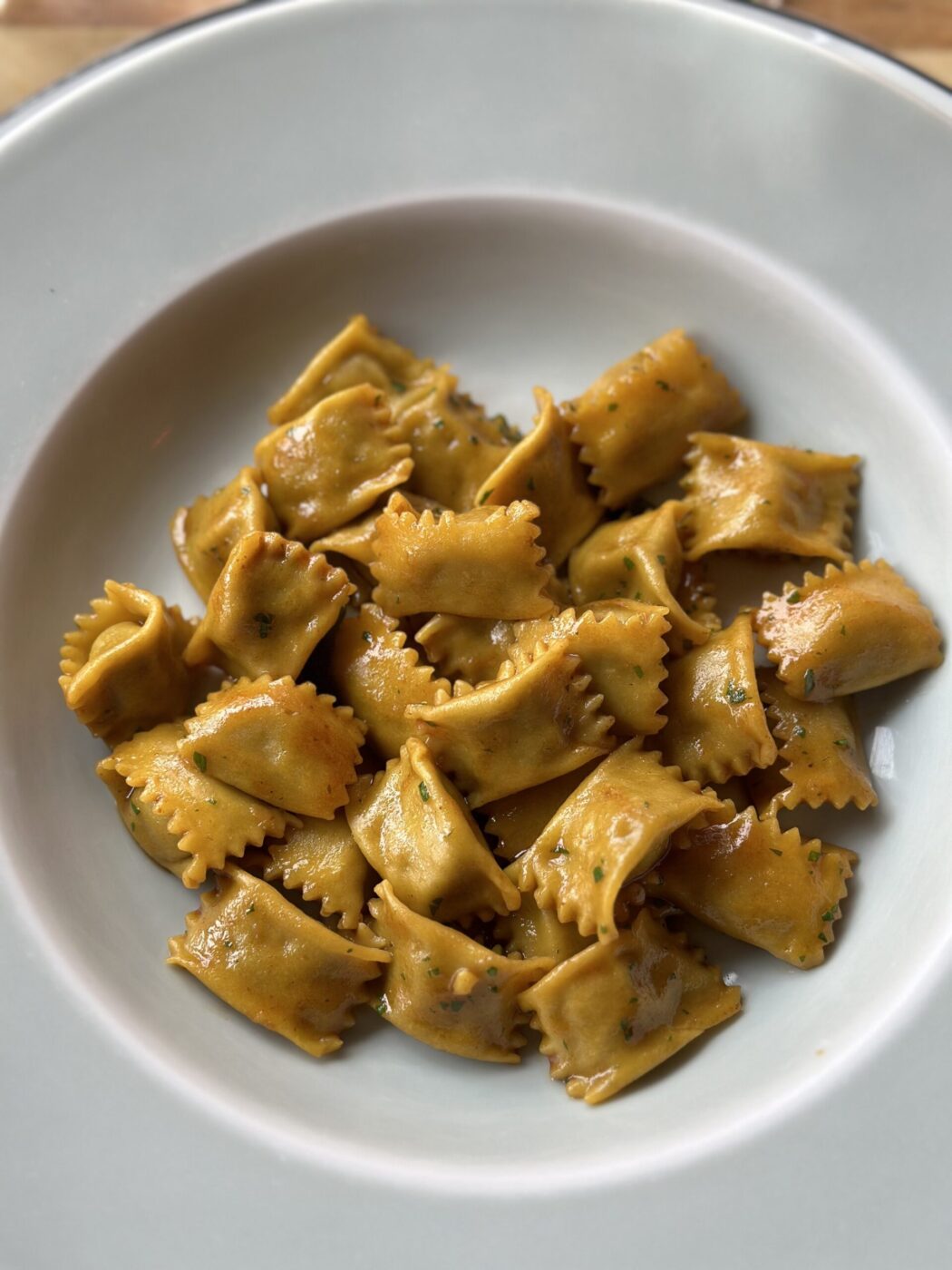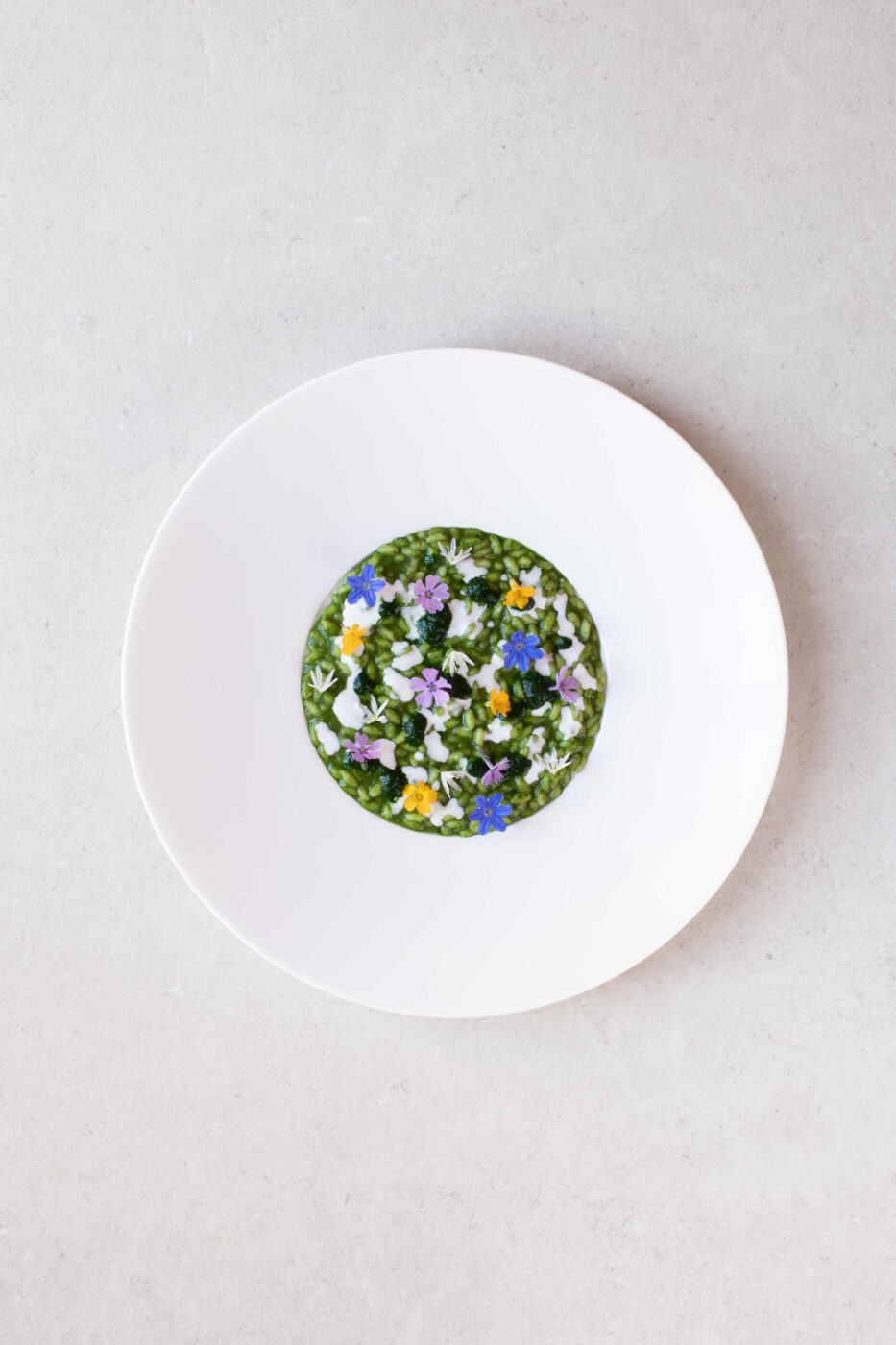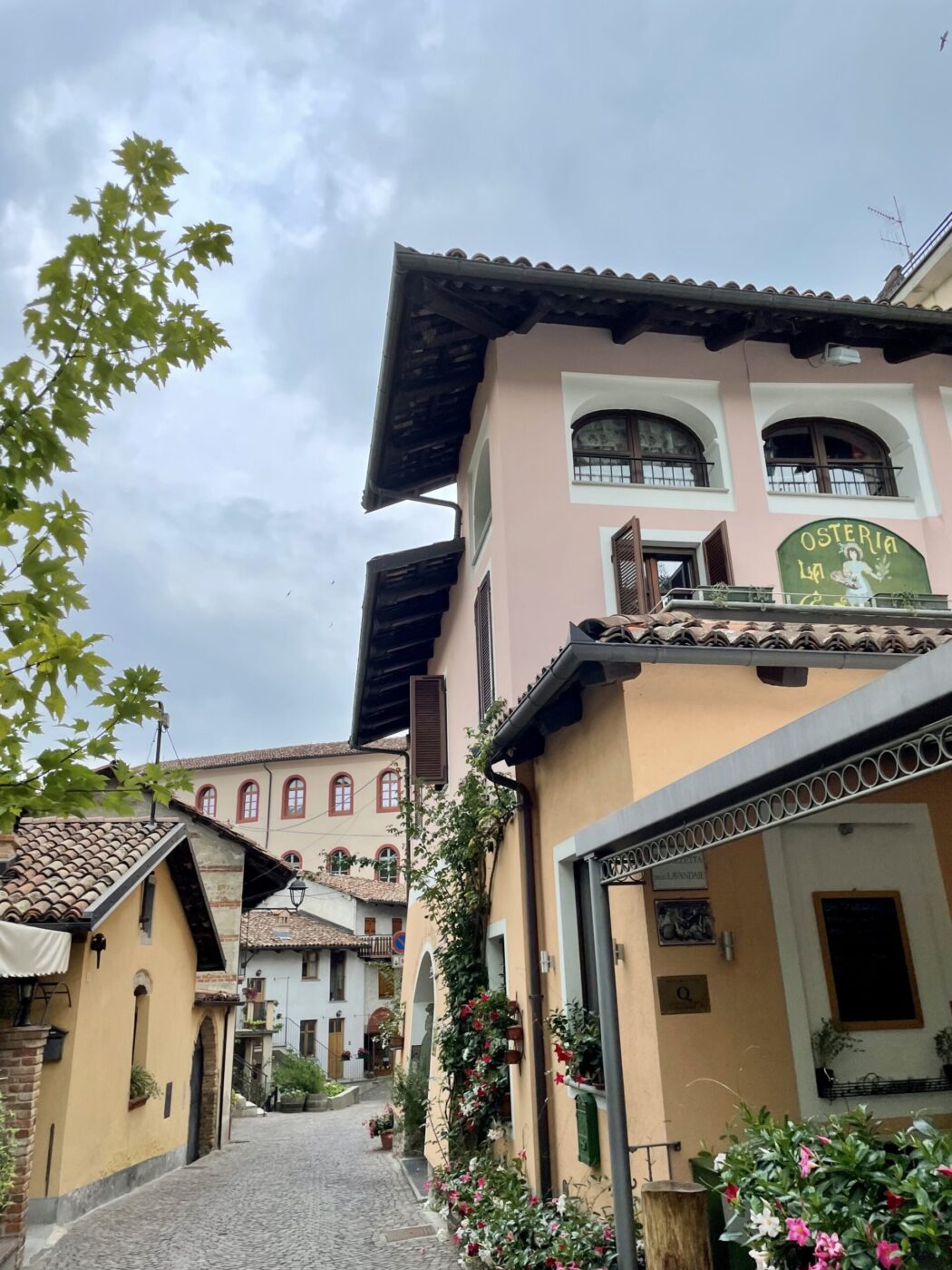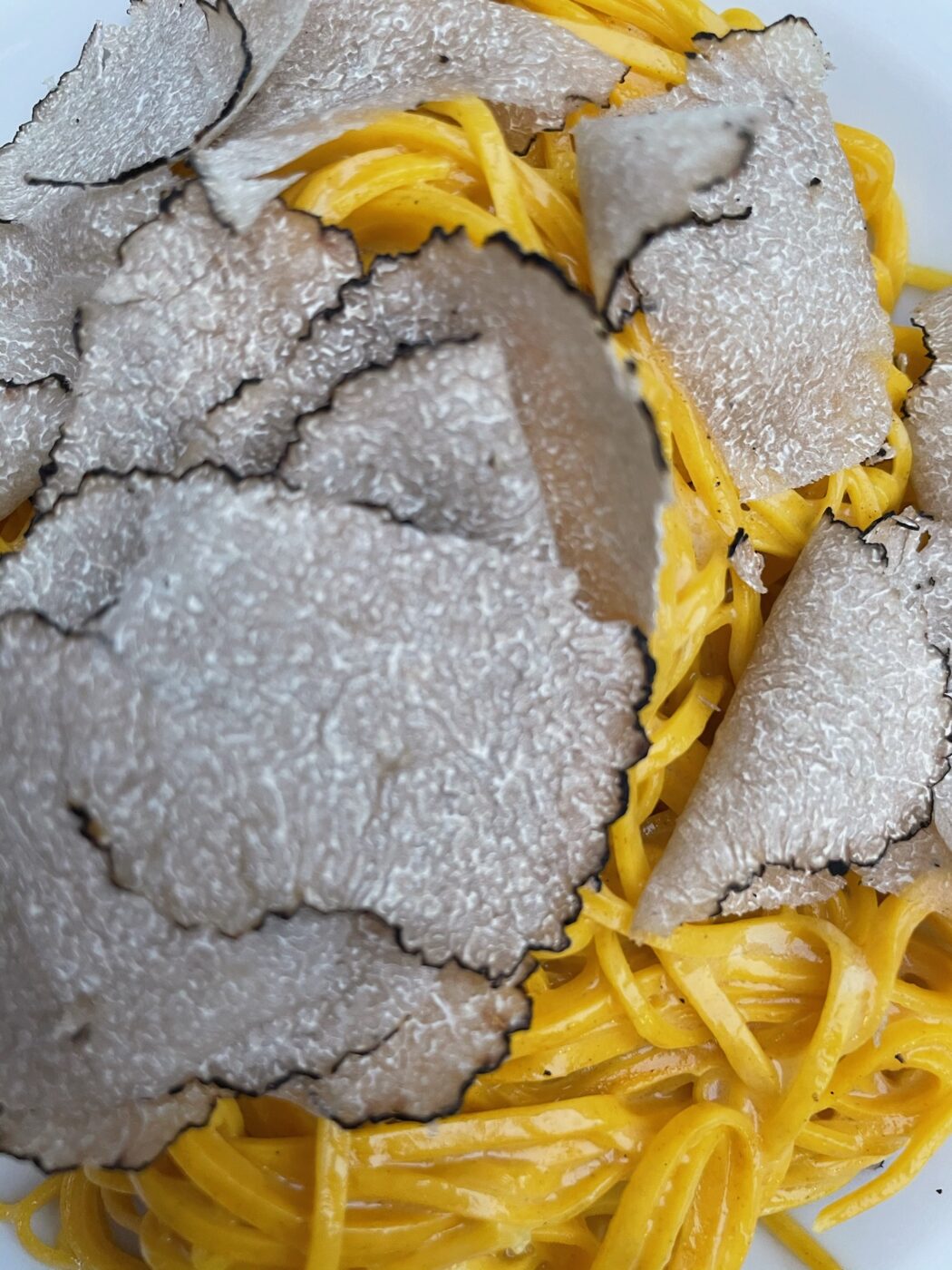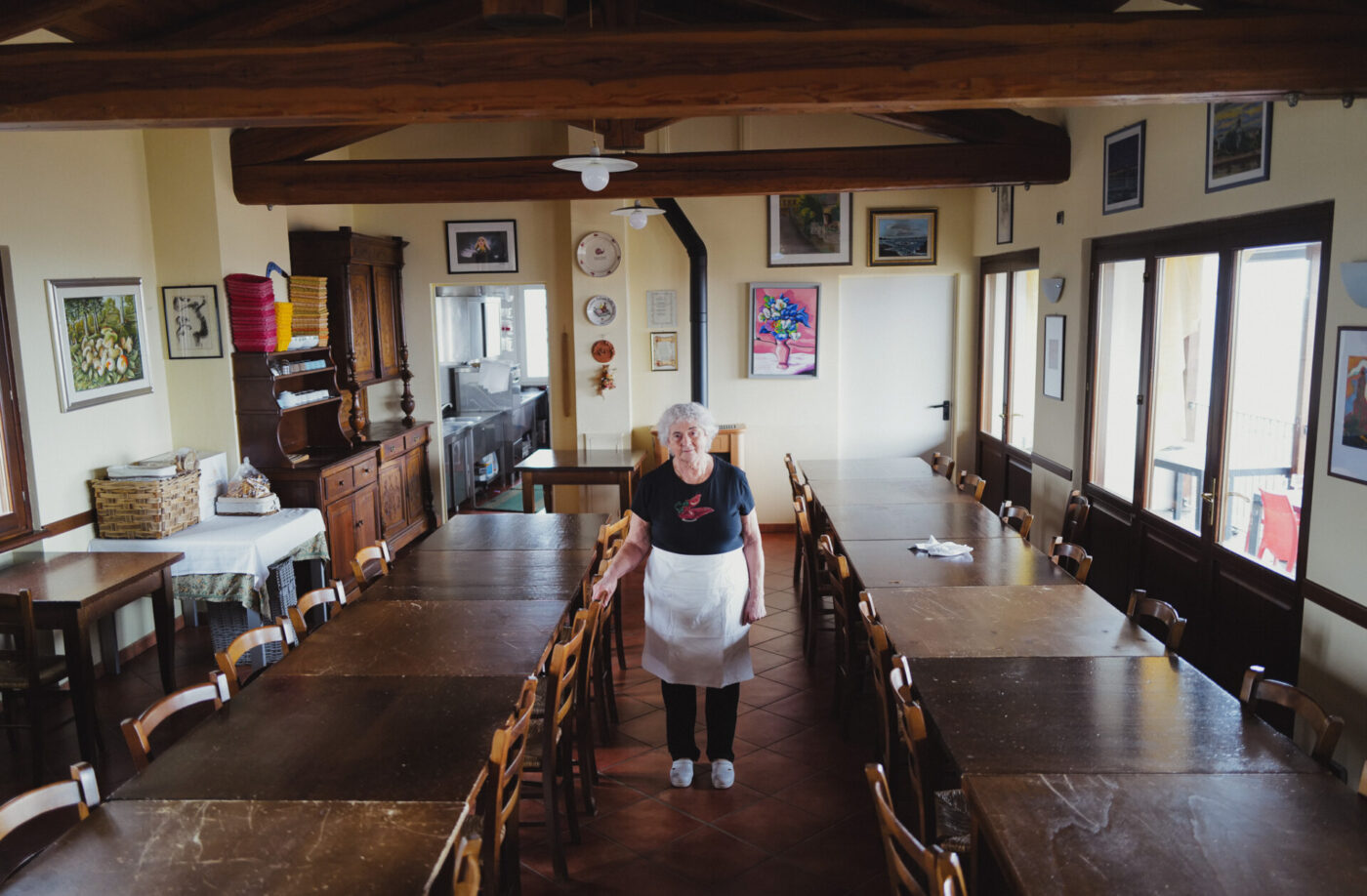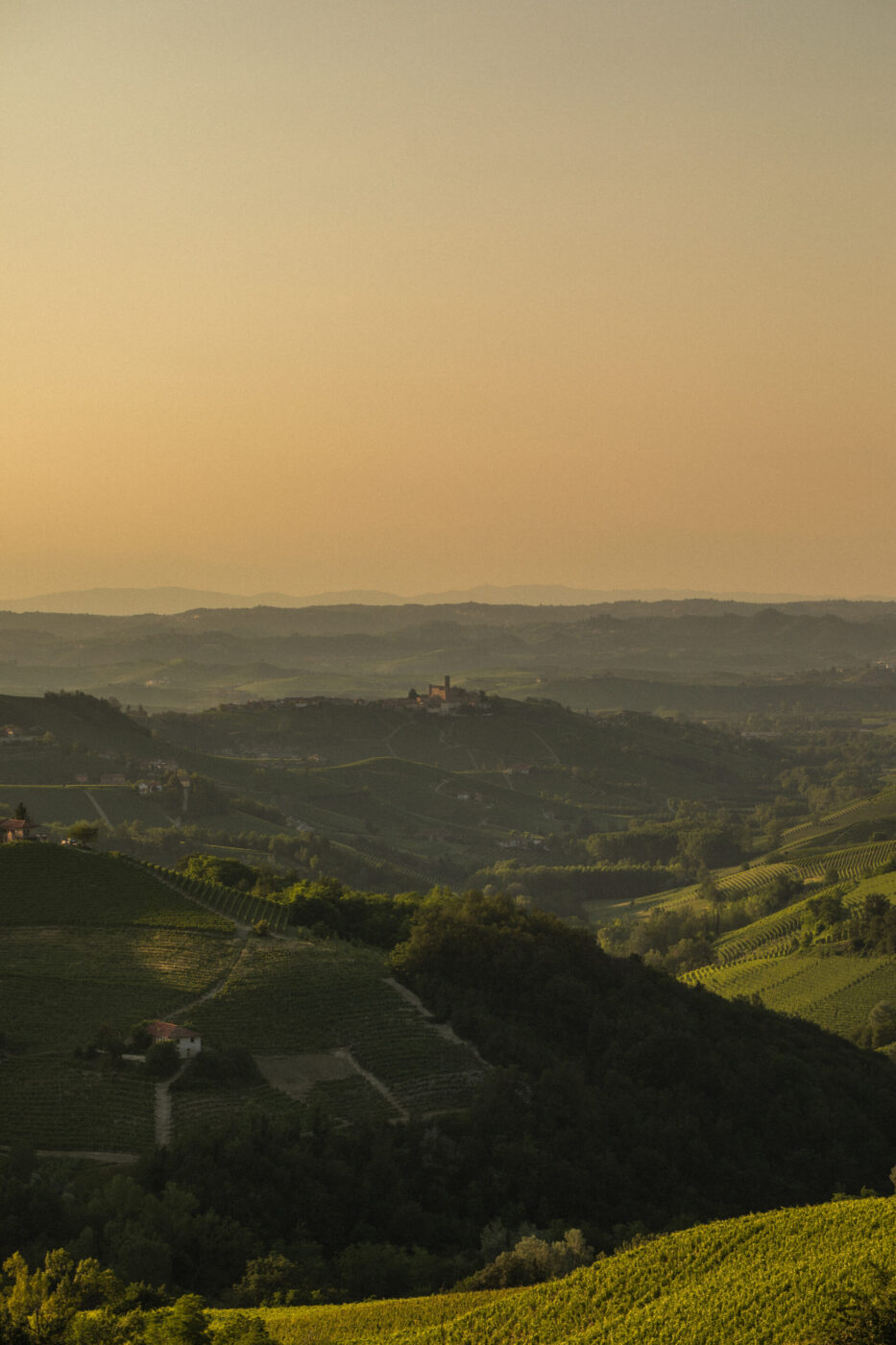The Langhe—a place that conjures up images of rolling hills, bold red wine, white truffles, hazelnuts, and expansive views of Monviso. This region in southern Piedmont comprises the comunes of Cuneo and Roero, featuring an abundance of small hilltop towns situated between rows upon rows of vineyards. Barolo, Barbaresco, Nebbiolo, and Barbera reign supreme here, but the area’s food is no supporting act. Eggy tajarin and silky agnolotti del plin are dolled out for primi, followed by slow-cooked brasato or raw Fassona beef tartare. Desserts are often plates of local cheese, a nod to the traditions of their over-the-Alps neighbors.
The Langhe’s reputation as a culinary destination isn’t just about what’s on the plate, but about a larger philosophy: this is where the Slow Food movement began and where the University of Gastronomic Sciences currently trains the next generation of gastronomes.
Here, a guide to the best restaurants among the Langhe’s patchwork of towns, hills, and vineyards, curated by Daniel Eggener, the founder of Experience Piemonte and an on-the-ground expert on where to go in the region.
Travelers visiting Alba or Bra can also check out these comprehensive locals’ guides: Alba and Bra.
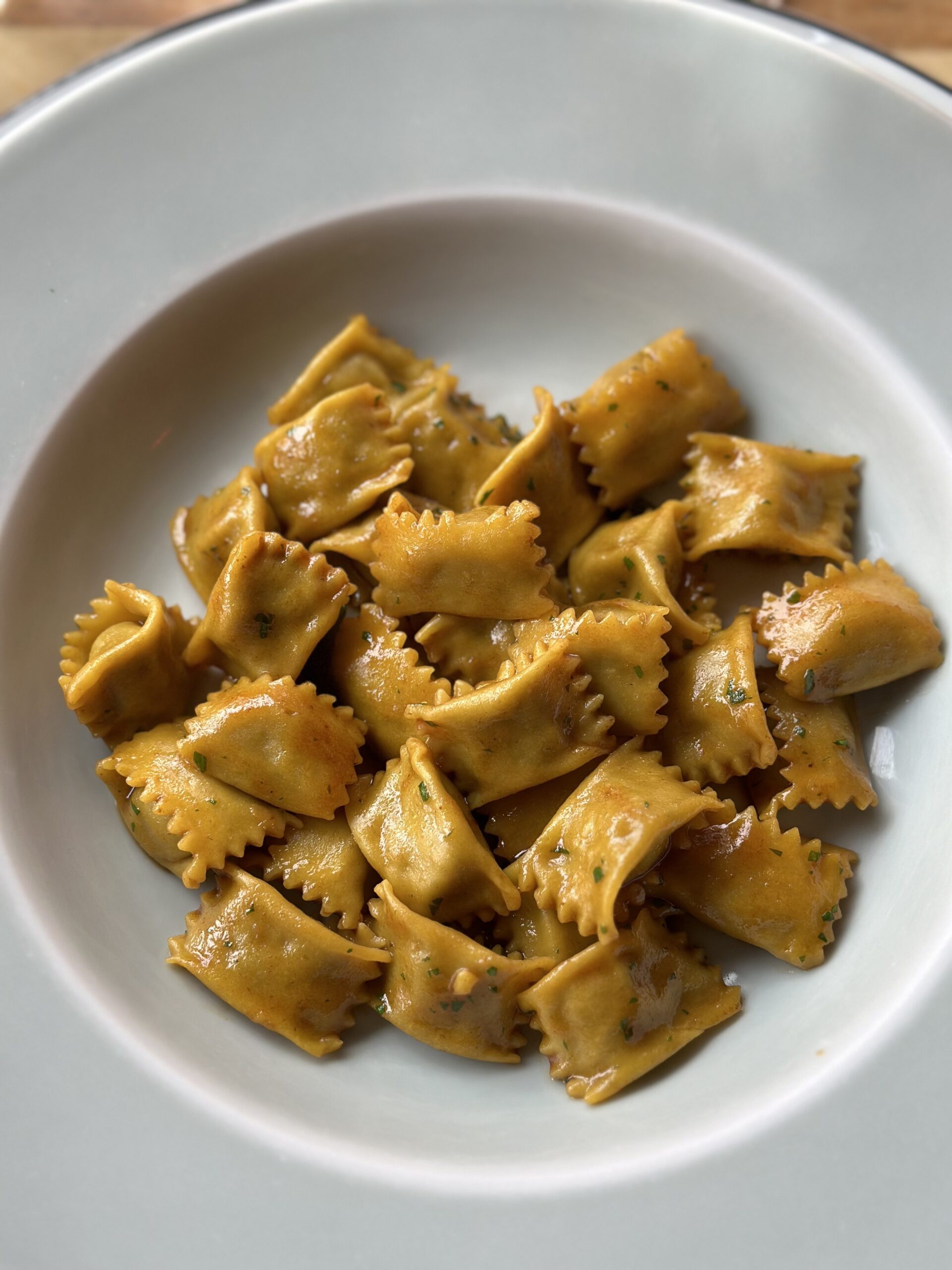
Agnolotti at La Piola; Photo by Rachele Neal
ALBA
Piazza Duomo – A culinary mecca by chef Enrico Crippa, Piazza Duomo offers avant-garde interpretations of Piedmontese cuisine in a serene pink dining room. One of the region’s most famous restaurants for a reason, the three-Michelin-starred spot features artistic plating, hyper-local ingredients, and a multi-sensory dining journey across five often-changing tasting menus—including the best truffle tasting menu of the region (when in season).
La Piola – A stylish osteria with a modern touch, offering expert versions of regional favorites—try the tajarin with truffle or salsiccia, and the battuta with freshly shaved truffle. The wine list reflects the region’s best, with must-try labels from their nearby family winery. The osteria belongs to the same group of Piazza Duomo, offering the same caliber of service and food but at a lower price point.
Osteria Lalibera – Chic yet cozy, La Libera is known for polished versions of local dishes and a curated selection of wines right in the center of Alba. Design lovers will notice pieces like Louis Poulsen’s “Artichoke” lamp from the 1930s, and food lovers will swoon over the trippa, agnolotti, and pigeon. Their wine list has a strong showing of local labels.
Ventuno.1 – A modern bistro with a focus on inventive, seasonal cuisine inspired by Neapolitan- and seafood-leaning dishes. Opened by duo Alfonso Russo (chef) and Francesco Ferrara (sommelier), the restaurant is ideal for something different than the usual Piedmontese lineup. Order any of the pastas with seafood, from the gnocchi with prawns to the tagliolini with gallinella di mare (tube-fish).
Fuocofarina – Spearheaded by Fulvio Marino, this casual spot churns out wood-fired pizzas, focaccia, and great coffee from 7:30 AM to midnight. Pop in to grab a morning brioche and cappuccino or sit for a proper breakfast: you can go the Ligurian route and get focaccia to dip into your eggs, or the American route and get scrambled eggs, bacon, and slices of their excellent toast. Their pizza, awarded two stars by Gambero Rosso in 2024, is out of this world, with incredible options like carbonara, fava e pecorino, and orto alla sepante (vegetables with mustard) on offer. Don’t forget to grab a loaf (or two) of their sourdough to take home.
Casa Scaparone – This charming agriturismo in the hills outside Alba offers rustic accommodations and true farm-to-table dining. The on-site Osteria Agricola sources most of their produce from their organic 10-hectare farmland, which star in their tight menu of veg-forward, inventive dishes: think battuta with pomegranate, pancia with fermented cauliflower, and tajarin with rabbit and saffron. It’s a great place to enjoy the serene countryside setting, complete with vineyard views and regular live folk music events.
Caffè Teatro – This classic Italian coffee bar doles out superb espressos from 7 AM to 7 PM along with delicious classic sweets (crostatas, cornettos, baci di damas) and small plates (toast, bagels, pancakes). Inside is surprisingly stylish, with cozy chairs and minimalist decor that make you want to linger with a cappuccino (or matcha!) and a good book.
Enoteca Fracchia e Berchialla – Not a place to eat, but a trusted source for curated Piedmontese wines and rare labels with over 200 labels. Founded over 40 years ago, the enoteca—part of a family-run winery—has knowledgeable staff that guide you to the region’s best bottles, plus a great offering of other Italian vintages.
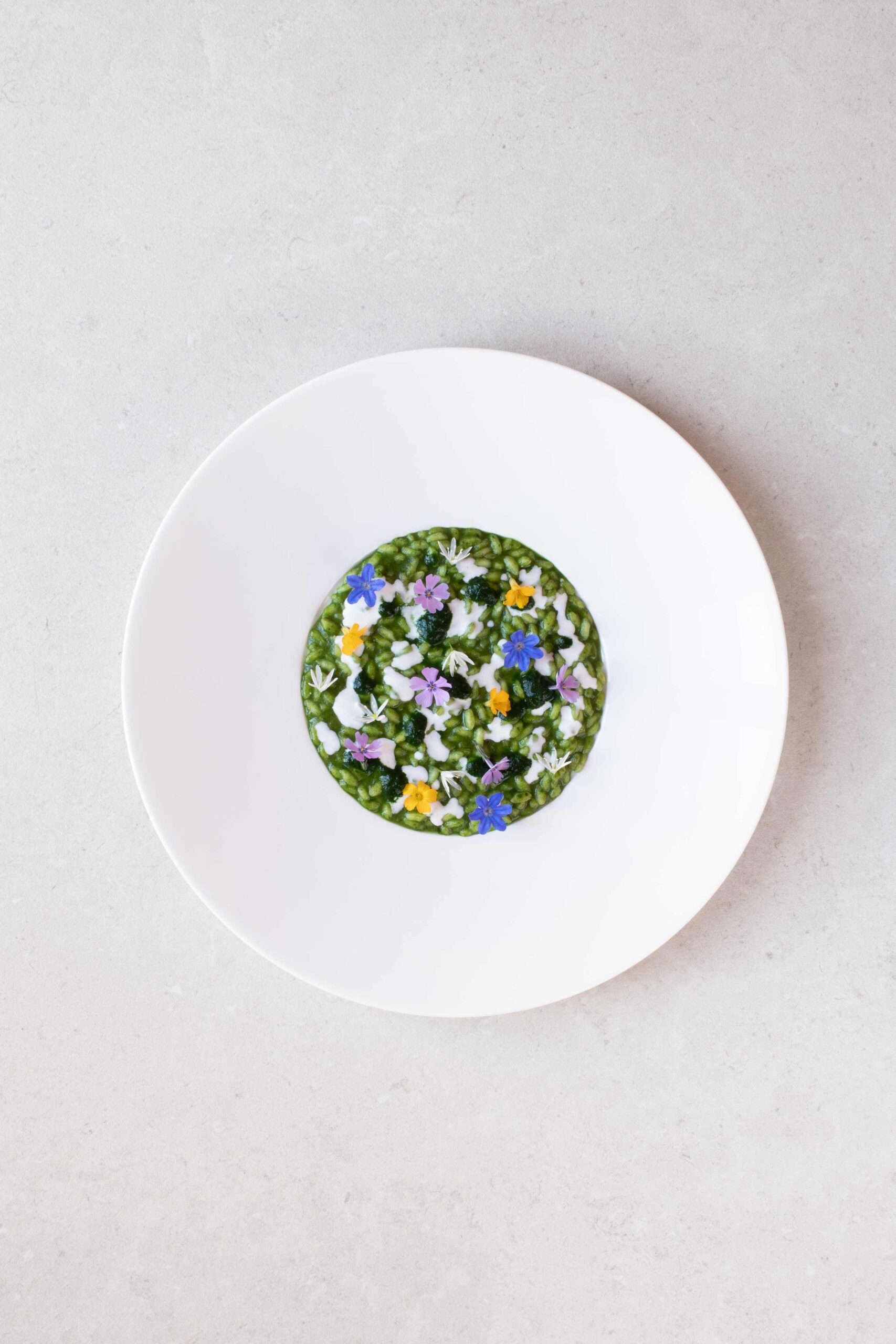
Piazza Duomo; Photo by Letizia Cigliutti
BARBARESCO
Trattoria Antica Torre – Right in the heart of Barbaresco, this family-run trattoria—open since the 1980s—is a staple for traditional fare and great wine. You’ll dine on superlative pasta on their beautiful, shaded terrace—they’re famous for their tajarin, painstakingly made by hand with 20/22 eggs for every kilo of local flour. An ideal destination after a day of wine tasting.
Campamac – This stylish grill house, macelleria, and restaurant offers expertly cooked meats (that pair exceptionally with the region’s hearty reds) and a buzzy atmosphere. It’s no surprise that executive chef Maurilio Garola’s signature dish is steak, with at least seven different options crowning the menu. All the meat is sourced by Paolo Dalla Mora, Maurilio’s partner, from European female cows (which produce generally softer meat) who are fed exclusively on hay, and then aged in-house for 60 days.
BAROLO
Petti’t Bistrot – Just inside one of the city’s historic gates, this intimate spot offers refined takes on local Piedmontese dishes in a relaxed, welcoming setting. It’s ideal for a chill lunch between winery visits, or an evening meal on the two-level terrace overlooking the Barolo hills. The menu features mainstay classics like vitello tonnato and rotating options like gnocchi with mussels, zucchini, and mint or rabbit salad with purple kale, apples, carrots and a ginger dressing.
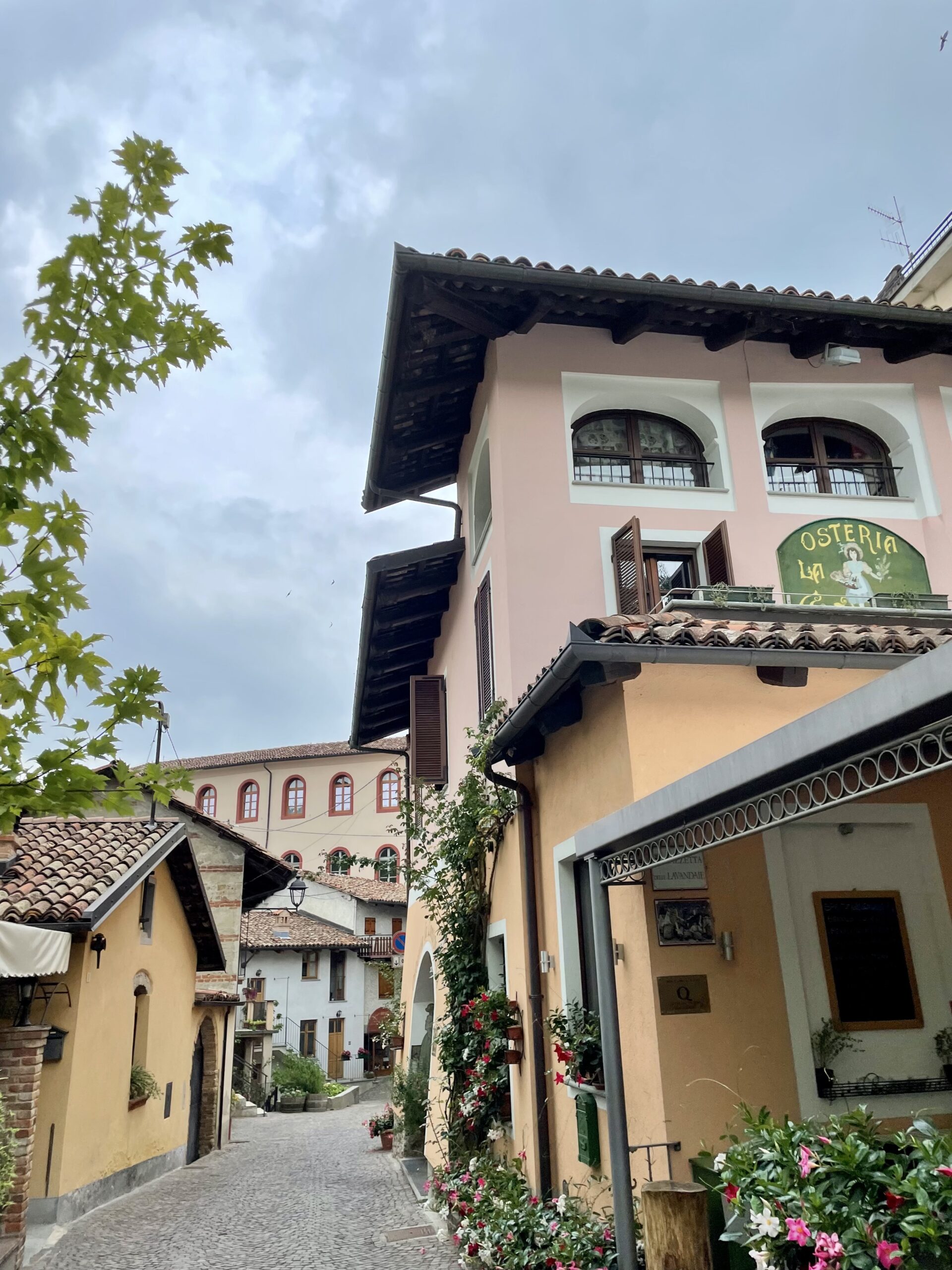
Barolo
BOSSOLASCO
Drogheria di Langa – This refined country restaurant serves seasonal menus within an elegant but relaxed atmosphere. They’re known for creative reinterpretations of local ingredients, like tajarin with a seafood sauce instead of salsiccia di bra and battuta with truffle and egg. They’ve got a few rooms where you can stay the night after.
BRA
Osteria del Boccondivino – Open since 1984, this is the official Slow Food restaurant, tucked inside the movement’s international headquarters in Bra. The wisteria-covered garden is ideal in warmer months, and the wine list draws from top Langhe and Roero producers. The 40-yolk tajarin is a classic, but it’s the ultra silky panna cotta that steals the show.
Ristorante Battaglino dal 1919 – A classic trattoria with a loyal local following, Battaglino feels surprisingly comfortable considering it is Bra’s finest establishment. Fourth-generation owner Alessia brings a modern edge with macrobiotic-inspired vegetarian dishes, while old-school staples like tripe and finanziera anchor the menu. Expect excellent wines, warm service, and top-tier food.
Bar Pasticceria Converso – A local institution since 1901 and recognized as one of the Locali Storici d’Italia, this historic cafe feels unexpectedly grand thanks to Gilded Age charm—think gold detailing, wood-paneled walls, and pared-back vintage decor. Perfect for a morning cappuccino or a quick caffè al bar and something from their next-door pasticceria. In summer, grab a cone of stracciatella, and in winter, an ultra-thick glass of hot chocolate with panna, and they serve a mean spritz come aperitivo time.
Giolito Formaggi (Bra) – One of not just Piedmont’s, but Italy’s most revered affineurs, Giolito offers incredible regional, raw milk cheeses that are aged to perfection. Founded as a market stall over a century ago, it became a Bra staple in the 1970s, and today, wheels ripen in on-site cellars—some to classical music. A true pilgrimage for cheese lovers, who can also book a tasting in the side room.
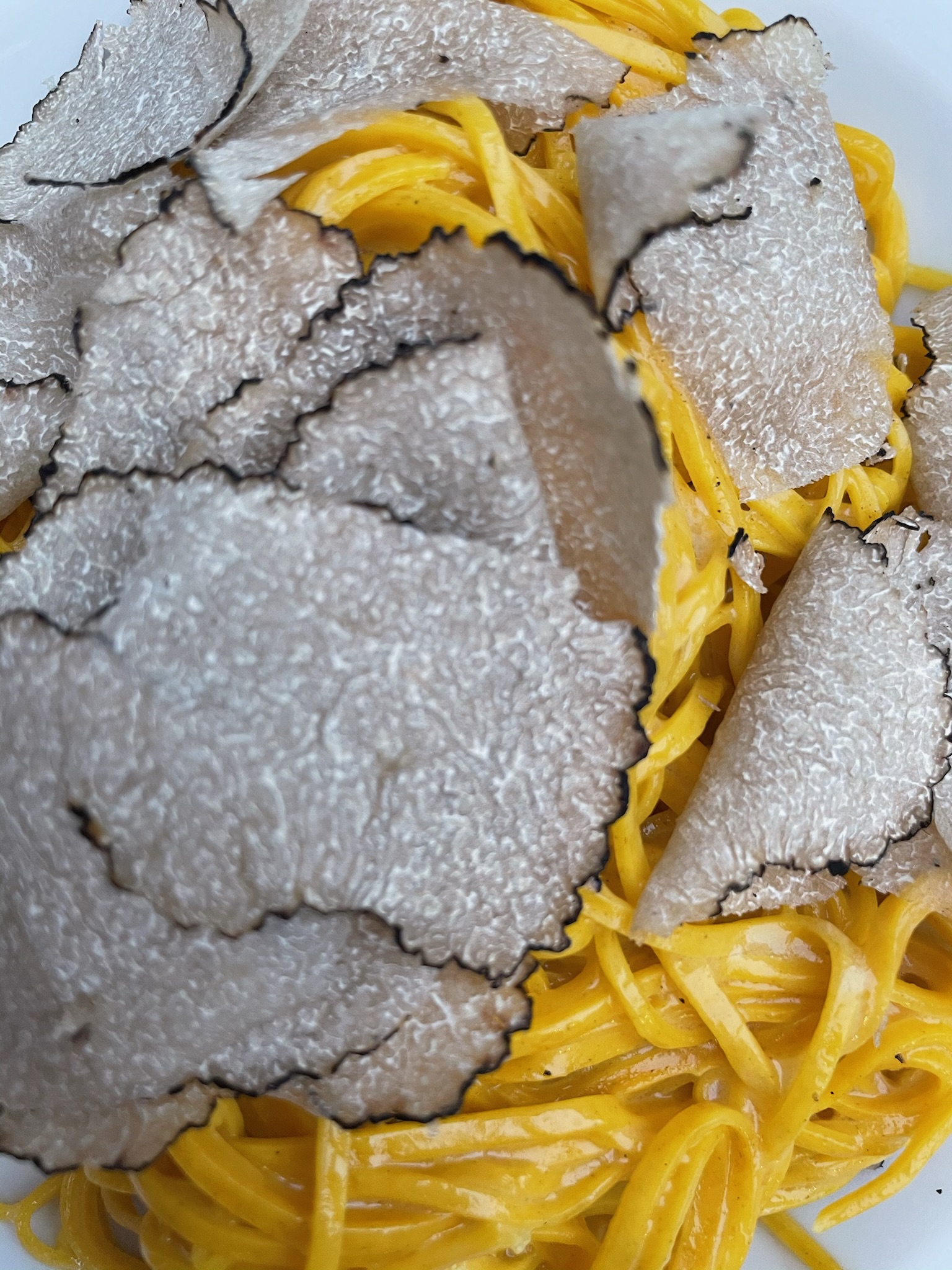
Tajarin con tartufo from Osteria del Boccondivino
CANALE
Enoteca di Canale – Chef Davide Palluda’s tasting menus capture the flavors of Roero with a bright, modern touch—served beneath the playful works of local painter Mondo (Raimondo Bracco). Innovative but grounded, it’s a destination for curious eaters, with a Michelin star since 2000.
CASTIGLIONE FALLETTO
Bar la Terrazza da Renza – Simple and charming, this osteria is as its name suggests: Renza’s terrace. Boasting vineyard views and home-style cooking, it’s all about unpretentious authenticity. They emphatically only offer appetizers—but the selection is so great (and pointedly 0 km) you certainly won’t miss the primi or secondi. Their wine list, and on-site Enoteca del Ponte, are excellent as well.
CERVERE
Antica Corona Reale – A bastion of fine dining since the 19th century, this elegant countryside restaurant blends royal Piedmontese recipes with seasonal precision. Chef Gian Piero Vivalda leads his two-Michelin-star kitchen with masterful craftsmanship in dishes like agnolotti and roasted meats, often made with ingredients from their own garden. Opt for a table in the wisteria-covered courtyard.
LA MORRA
Osteria More e Macine – This osteria—a lively stop for locals and winemakers—knows their wine. But beyond the amazing list, this quaint, relaxed spot is popular for its great pasta. The tight menu is inventive and fun, with dishes like plin with butter and lavender, fish & chips, and spring pea cheesecake.
Osteria Veglio – Offering insane views over the Langhe’s rolling hills, this restaurant, situated right at the edge of town, is as welcoming as the kindhearted locals that work there. Their hearty cuisine is complemented by generous portions and service that makes you feel like an old friend. Don’t miss the agnolotti del plin.
Belsit In Langa – Every seat in the house—whether on the terrace or next to a floor-to-ceiling window in the dining room—is a winner. Known for its wine cellar and time-honored recipes like brasato al Barolo, the classic spot is now owned by the famous Giacomo Conterno winery, making for an elevated dining experience.
MONFORTE D’ALBA
Il Giardino Da Felicin – A family-owned hotel and restaurant serving seasonal Piedmontese and warm hospitality. Dine under the pergola, on the terrace, or in cozy dining rooms filled with history from the restaurant’s more than 100 years of operation, and be sure to order the tajarin. It’s particularly nice when you’re sipping on a Piedmontese red as the sun sets behind Monviso.
Le Case della Saracca – This multi-level wine bar, restaurant, and hotel concept is connected by vertiginous staircases, making the space feel like polished archeological digs. Order the tajarin with truffle, the battuta, and any of their specials.
Enoteca Rocca – This family-run wine shop has a strong selection of bottles and excellent local advice. A perfect stop to build your cellar or to plop a seat at one of their tiny tables and sample some homemade local dishes with a vintage (or two).
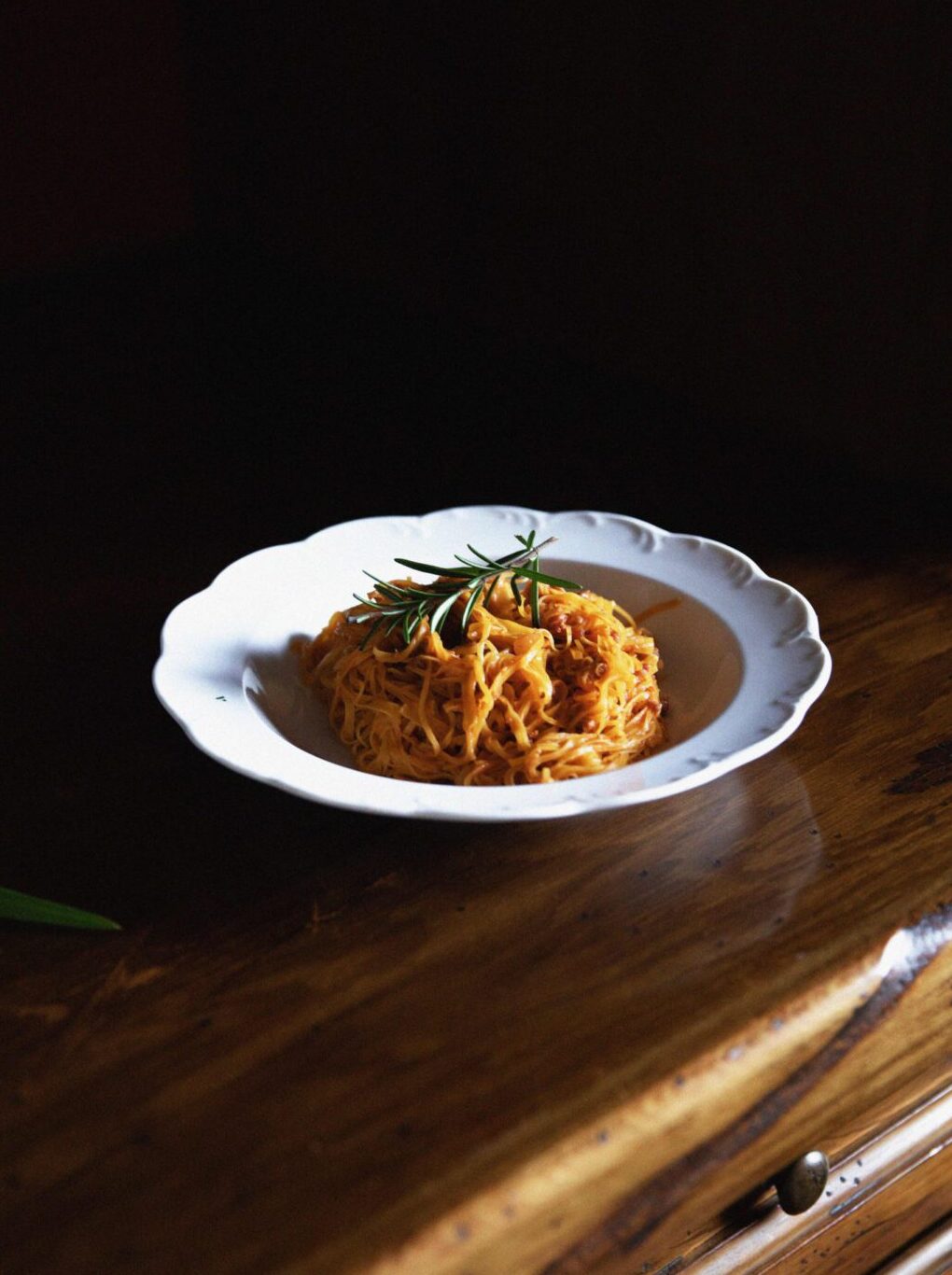
Felicin; Photo by Letizia Cigliutti
PRIOCCA
Il Centro – Awarded one Michelin star, this historic family-run institution offers refined takes on Piedmontese staples. Helmed by Executive Chef Elide Mollo, the kitchen whips up timeless dishes like tajarin and vitello tonnato but plates them like a true Michelin establishment. You’ll have to book well in advance to taste their renowned fritto misto: a classic Piedmontese cucina povera dish of sweetbreads, brains, calves livers, sausage, frisse (a pork meatball/sausage), and batsoà (pigs trotters), all breaded and fried in oil and butter.
RODDINO
Da Gemma – This cherished spot, helmed by Gemma herself, is celebrated for its homestyle cuisine served in a warm, rustic setting. The menu is heavy on the regional classics: vitello tonnato, plin, bunet, and the best tajarin con salsiccia di bra, all prepared with simplicity and heart. It’s extremely popular, so a heads-up that reservations are absolutely essential, and typically booked about six months out.
SERRALUNGA D’ALBA
Vineria Centro Storico – In a quaint standalone orange house, this restaurant is a wine lover’s destination with rare bottles, simple but excellent food, and a charismatic host. A chalkboard menu advertises the dishes of the day—rabbit, baccala, and paccheri are just some to expect along with the usual Piedmontese lineup. End your meal with the homemade bunet or a tasting of local cheeses, and wash it down with something you’re recommended.
Guido a Fontanafredda – Located on the historic Fontanafredda estate, this Michelin-starred restaurant combines tradition with modern class, honoring the legacy of Guido Alciati, who opened the restaurant with his wife Lidia in 1961. Now run by their children Ugo and Piero, this place serves a perfect match of Piedmontese classics and Savoy heritage, with a superlative version of ravioli al sugo d’arrosto.
SERRAVALLE LANGHE
Trattoria La Coccinella – A beloved spot by locals and in-the-know travelers for heartfelt Piedmontese cooking and a superb wine list. The cuisine is traditional yet refined, with impeccable service rounding out the picture. Opened in 1998 by a team of three brothers, the “ladybug” trattoria maintains a legacy of working directly with local breeders, farmers, and fishermen, which shines through their simple, sophisticated menu.
Trattoria Belvedere – True to its name, this trattoria offers fantastic views and a traditional menu. Founded nearly 100 years ago in 1927, it’s seen four generations of the same managing family pass through, but remains a steadfast favorite for casual, genuine dining. Inside is simple, with bright colored chairs and a vibe that matches the heartwarming food on offer: buttery agnolotti, tangy tajarin con salsiccia, rich roast rabbit, velvety vitello tonnato.
TREISO
La Ciau del Tornavento – With panoramic vineyard views, La Ciau offers refined local fare and an impressive wine cellar of 65,000 bottles from 450 producers. Housed in a former nursery school, the romantic, Michelin-starred restaurant often uses luxurious ingredients like truffles and foie gras, although local, seasonal produce often steals the show. If it’s on the menu, order the agnolotti nel fieno (agnolotti cooked in hay).
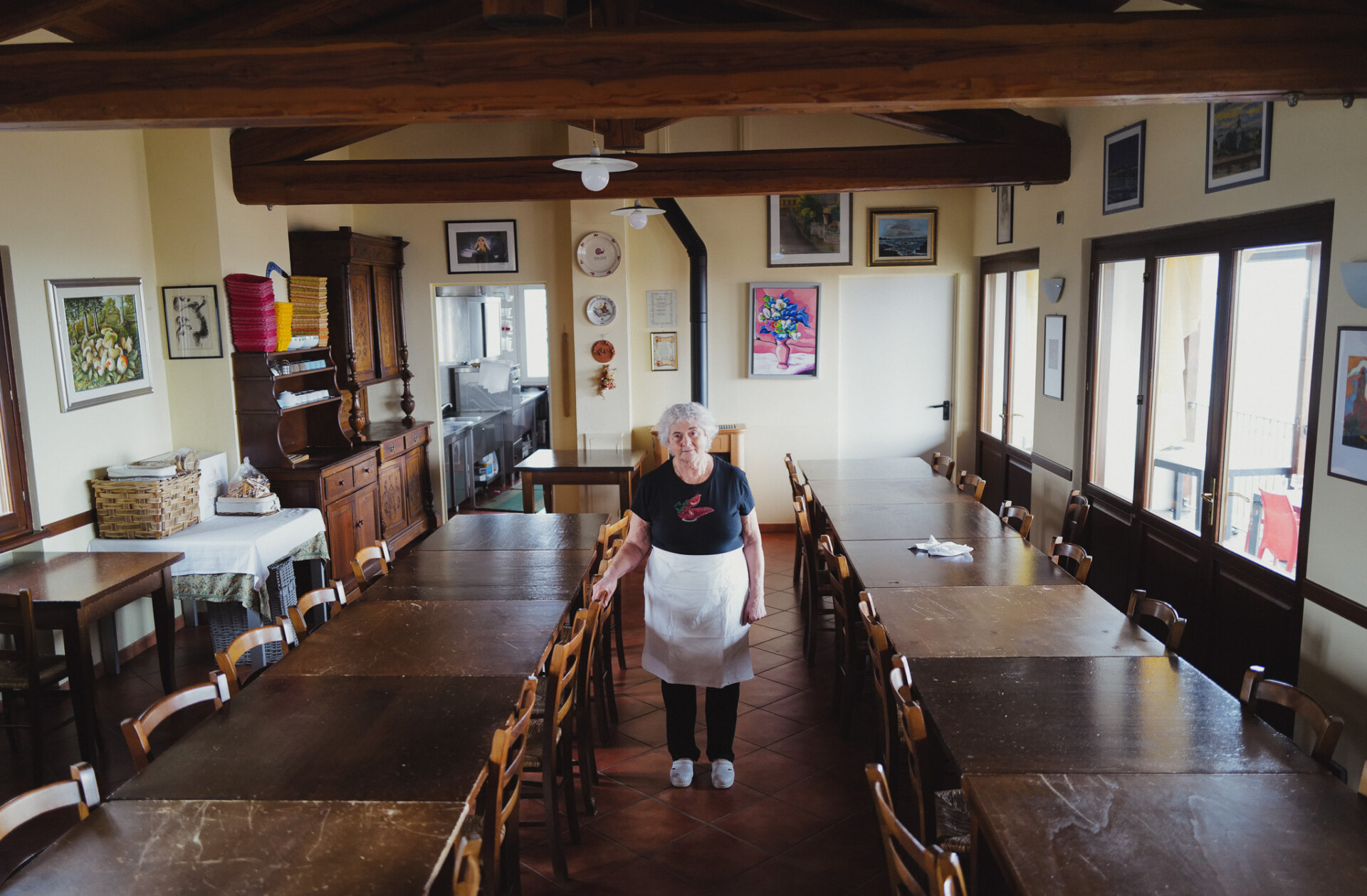
Gemma inside of Osteria Da Gemma
